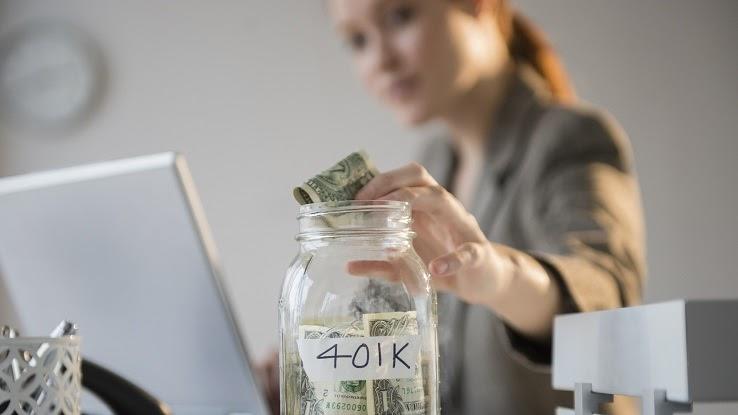
Has your employer given you notice that your retirement plan will soon be converted to a safe harbor 401(k) plan? If so, you may be in for a pleasant surprise. Safe harbor plans often include employer contributions or employer matching arrangements that can benefit your retirement savings in some pretty helpful ways.
Although each plan is different, this change may mean that you’ll start to accumulate even more vested savings in your 401(k) account while making the same annual contributions. To better understand how a safe harbor 401(k) could impact the way you’re currently saving for retirement, it’s important to learn the differences between a safe harbor plan and a basic 401(k) plan.
401(k) Plan Administration Can Be Challenging

Any type of 401(k) plan is highly regulated because there are various opportunities for tax-deferred income associated with these accounts. The government wants to ensure that these retirement accounts are used fairly and in accordance with IRS standards. Because these accounts are federally regulated, the government also works to ensure that they’re beneficial for all employees who have them. Below are some examples of issues that can arise with basic 401(k)s.
At one large corporation, the lowest-paid employees may make $30,000 per year, while the CEO makes $3 million per year. If a 401(k) is part of the benefits package for the business, employees across this wide range of pay scales all have the opportunity to make voluntary contributions to their 401(k) each year. However, an employee who makes $3 million may be able to save far more than an employee who makes $30,000 by making maximum contributions to their account. In 2021, the maximum amount of money a person can contribute to their 401(k) is $19,500 — a number that’s not easy for someone earning $30,000 to save.
Here’s another example. At a small business, there are five employees, four of whom are business partners with 25% ownership rights in the company. The other employee is a receptionist who has a salary of $40,000. As the business grows more successful, the partners are more likely to contribute the maximum amount to their 401(k)s each year, while the receptionist may have trouble contributing $2,000.
In both examples, the disparities can result in expensive penalties for the business.
The Purpose of a Safe Harbor Plan

Government agencies conduct annual non-discrimination testing on company-run 401(k) programs to ensure that the benefits of the programs don’t become skewed towards helping certain employees more than others. The testing compares the voluntary contributions highly compensated employees make with the contributions of other employees.
There’s a variety of standards to determine who qualifies as a highly compensated employee. It could be an employee who has more than 5% ownership in the business, or it could be someone with annual earnings of $130,000 or more. Some companies also opt to set their own standards for highly compensated employees when no employees meet the traditional standards.
When an excessively high percentage of annual contributions comes from highly compensated employees, the business is at risk of failing a non-discrimination test. The business must take remedial action if it fails a test, which could involve making contributions on behalf of lower-earning employees. The most serious consequences of repeated failed tests can be the dissolution of the 401(k) plan, meaning the IRS no longer recognizes the savings as being tax-deferred.
An alternative solution is to convert the program to a safe harbor plan. A safe harbor plan protects the business from expensive pitfalls that can arise when high-earning employees make the majority of voluntary contributions.
What Is a Safe Harbor 401(k) Plan?

401(k) safe harbor plans are specifically designed to meet the standards of non-discrimination testing, so safe harbor plans don’t undergo annual tests. Instead of hoping that employees at all income levels contribute enough, the employer makes specified annual contributions on behalf of each employee. These contributions are vested as soon as they’re deposited, meaning that the money belongs to the employees, who can withdraw it in accordance with 401(k) withdrawal rules. Employees are still able to make voluntary contributions of their own to their 401(k)s, too.
Any existing 401(k) plan can be converted to a safe harbor 401(k) plan. Making the change requires two steps. First, the employer must consult with the 401(k) plan provider to work out the logistics of converting the plan. Although most providers offer safe harbor plan options, some don’t. In general, providers charge less for administering a safe harbor plan than a traditional plan. The IRS also requires employers to give employees written notice within 30 to 90 days of the change. The notice must clearly spell out how the change will impact each employee and what employer contributions the employee may be eligible for.
What Are the Types of 401(k) Safe Harbor Plans?

There are three different types of safe harbor 401(k) plans. Each plan type requires a different type of employer contribution. In a non-elective safe harbor plan, employers contribute 3% of each employee’s annual income to the employee’s 401(k). This contribution exists for all employees who are eligible for 401(k) savings, and the employer makes the same contribution regardless of how much the employee contributes.
A basic safe harbor 401(k) plan is an employer-matching plan. For employees who contribute 3% or less of their annual earnings, the employer will match the employee’s contribution, but the employer match won’t exceed 3% of the employee’s annual earnings. If the employee’s contributions exceed 3% of earnings, the employer will continue to match half of the earnings over 3%, but the employer’s total contribution for the year won’t exceed 5% of the employee’s annual earnings. This type of plan is also called an elective safe harbor plan.
An enhanced safe harbor 401(k) plan is an even simpler form of employer contribution matching. The employer makes a 1:1 match of any money the employee contributes, but the employer contribution won’t exceed 4% of the employee’s earnings for the year.
How Do Safe Harbor Plans Benefit Employees?

Many employees enjoy the advantages of safe harbor plans. Although some plan types require employees to make voluntary contributions to unlock the benefits of employee matching, this type of 401(k) offers the ability to double any employee contributions. Even the best of investments don’t usually double each time someone makes them.
Immediate vesting is also a big benefit. In other 401(k) arrangements, employees have to wait three years or more for any 401(k) contributions to be fully vested — meaning theirs to use. With a safe harbor plan, an employee could withdraw all of the employer contributions anytime they want, although tax penalties for early withdrawals in retirement plans still apply.





